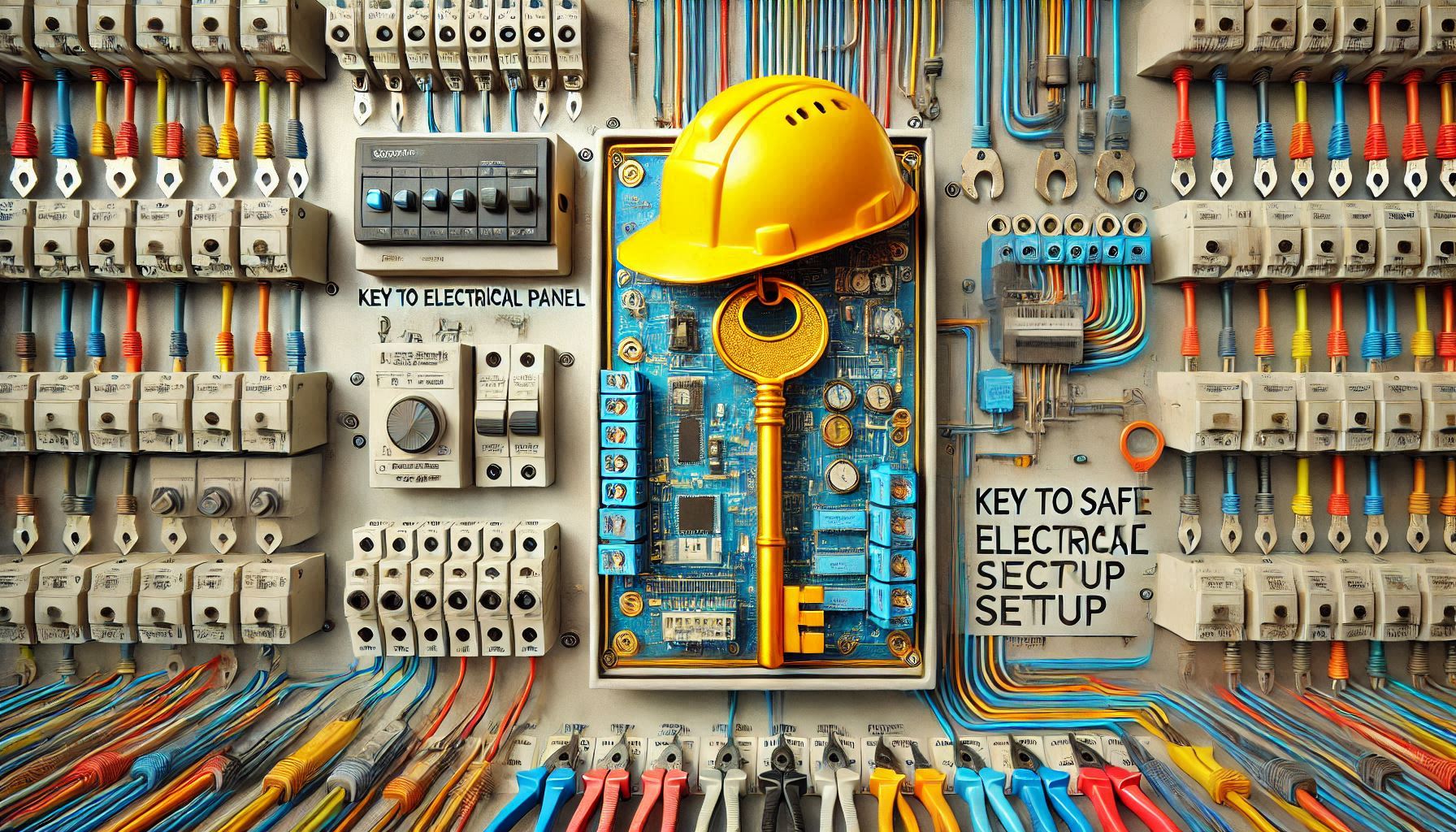When it comes to setting up electrical systems in homes or businesses, safety should always be a top priority. The span electrical panel is one of the most crucial components in achieving a safe and reliable electrical setup. In this article, we’ll explore the importance of span electrical panels, how to choose the right one, and why investing in a high-quality panel can prevent hazards and improve your electrical system’s efficiency.
What is a Span Electrical Panel?
A span electrical panel is the heart of any electrical system in a building. It acts as the central hub where electricity from the utility company enters and is distributed throughout the home or business. This panel houses circuit breakers, which act as safety switches to prevent overloading and electrical fires.
Components of a Span Electrical Panel
A span electrical panel typically includes:
- Main breaker: Controls the overall power supply to the electrical panel.
- Circuit breakers: These are safety mechanisms that automatically shut off the power if a circuit overload occurs.
- Bus bar: The metal strip that distributes electricity to various circuits.
- Neutral bus bar: A bar that connects neutral wires, balancing the electrical load.
These components work together to manage the distribution of electricity safely and effectively across your property. For instance, if you’re using appliances or lighting like an incandescent light bulb, the circuit breakers ensure they operate without overloading the system.
Why is the Span Electrical Panel Important for Safety?
The span electrical panel plays an integral role in ensuring electrical safety. Without the right panel, you may experience frequent power outages, damage to appliances, or even dangerous electrical fires.
How the Span Electrical Panel Prevents Electrical Hazards
A high-quality span electrical panel helps prevent various electrical hazards, including issues caused by outdated or incompatible lighting systems. For instance, understanding the advantages of incandescent bulbs can help you make informed decisions about lighting choices, ensuring compatibility with your electrical setup and reducing the risk of overload or power surges.
- Overloaded circuits: It ensures that the electrical system doesn’t carry more power than it can handle, which could cause overheating.
- Electrical fires: The panel’s breakers automatically shut off power when circuits are overloaded or short-circuited, preventing sparks that could lead to fires.
- Power surges: The panel helps to balance electrical loads and prevents sudden power surges, which can damage appliances or equipment.
By choosing the right panel, you significantly reduce the risks associated with faulty electrical setups.
How to Choose the Right Span Electrical Panel for Your Home or Business
Choosing the right span electrical panel is crucial for safety, reliability, and long-term use. There are several factors to consider before making a decision.
1. Know Your Power Requirements
Before purchasing a span electrical panel, assess the power needs of your home or business. If you’re planning a renovation or adding new appliances, ensure the panel can accommodate increased power demands. A larger span electrical panel is necessary for buildings with multiple appliances, HVAC systems, or extensive electrical systems.
2. Understand the Number of Circuits Needed
The size of your span electrical panel depends on the number of circuits you require. For smaller homes, a 100-amp panel might suffice, while larger properties may need a 200-amp panel or even higher. The number of circuits will determine how much electricity can be safely distributed to different areas of your home or office.
3. Consider the Panel’s Quality and Brand
Not all span electrical panels are created equal. Choose a reputable brand known for manufacturing high-quality electrical panels. Trusted brands often have better safety features, longer warranties, and higher reliability.
Step-by-Step Guide to Installing an Electrical Panel
Installing a span electrical panel should always be done by a licensed electrician to ensure safety and compliance with local electrical codes. Here’s a step-by-step overview of the installation process.
Step 1: Assess the Location
Choose a dry, easily accessible location for the span electrical panel. It should be close to where the main electrical supply enters your home or business. Ensure there’s enough space for future upgrades or repairs.
Step 2: Disconnect the Power
Before beginning any electrical work, make sure the main power supply is completely shut off. This is crucial for safety to avoid the risk of electrocution.
Step 3: Mount the Panel
Mount the span electrical panel securely to the wall, ensuring it’s level and positioned properly. Be sure to follow the manufacturer’s instructions for the correct placement.
Step 4: Install the Main Breaker and Circuit Breakers
Next, install the main breaker and individual circuit breakers. The main breaker should be installed first, followed by the individual breakers for various circuits like lights, outlets, and appliances.
Step 5: Wire the Panel
Wire the panel by connecting the input and output terminals, making sure that all connections are tight and secure. This part of the process requires precision to ensure the electrical system is properly configured.
Step 6: Test the System
Once everything is connected, turn on the main breaker and test each circuit to ensure that it is functioning correctly. If all systems are operational, you’ve successfully installed your panel.
Common Mistakes to Avoid When Installing a Span Electrical Panel
To ensure the success and safety of your installation, avoid these common mistakes:
1. Choosing an Undersized Panel
Opting for a span electrical panel that’s too small can lead to overloading and safety issues. Ensure the panel is adequately sized for your electrical demands.
2. Improper Wiring
Incorrect wiring can cause short circuits, damage to equipment, or even electrical fires. Always ensure the wiring is done correctly and securely.
3. Skipping Professional Help
Electrical work can be dangerous if not done correctly. It’s essential to hire a licensed electrician to install your span electrical panel safely and in compliance with local codes.
Maintaining Your Span Electrical Panel
Once your span electrical panel is installed, maintenance is crucial to ensure it continues to work efficiently. Regular inspection and maintenance can prevent malfunctions and extend the lifespan of your electrical system.
1. Regular Inspections
It’s a good idea to have your span electrical panel inspected by a professional at least once every few years. They will check for any signs of wear, loose connections, or other issues.
2. Keep the Panel Clean
Ensure the area around yourpanel remains clean and free of debris. Dust, dirt, and moisture can affect the performance and longevity of your panel.
3. Replace Faulty Circuit Breakers
If a breaker trips repeatedly or shows signs of wear, replace it immediately to prevent safety hazards.
Conclusion: Ensure a Safe Electrical Setup with the Right Span Electrical Panel
In conclusion, it is essential for the safety and efficiency of your electrical setup. Choosing the right panel, having it installed by a professional, and maintaining it properly can help prevent dangerous situations and ensure your electrical system runs smoothly.
By understanding what a span electrical panel is, why it’s important, and how to properly choose, install, and maintain it, you can make informed decisions that prioritize safety and reliability for your home or business. Don’t wait – secure your span electrical panel today and enjoy a safer electrical system!


